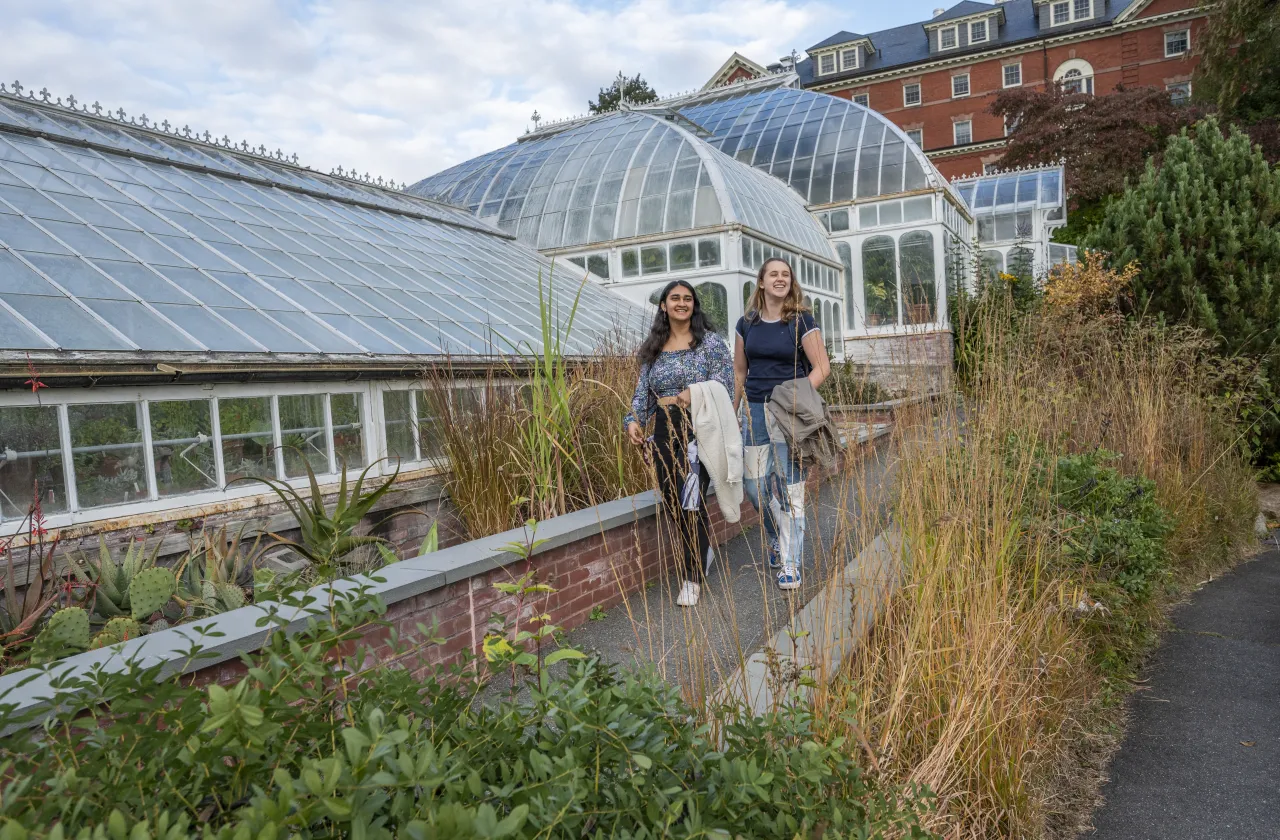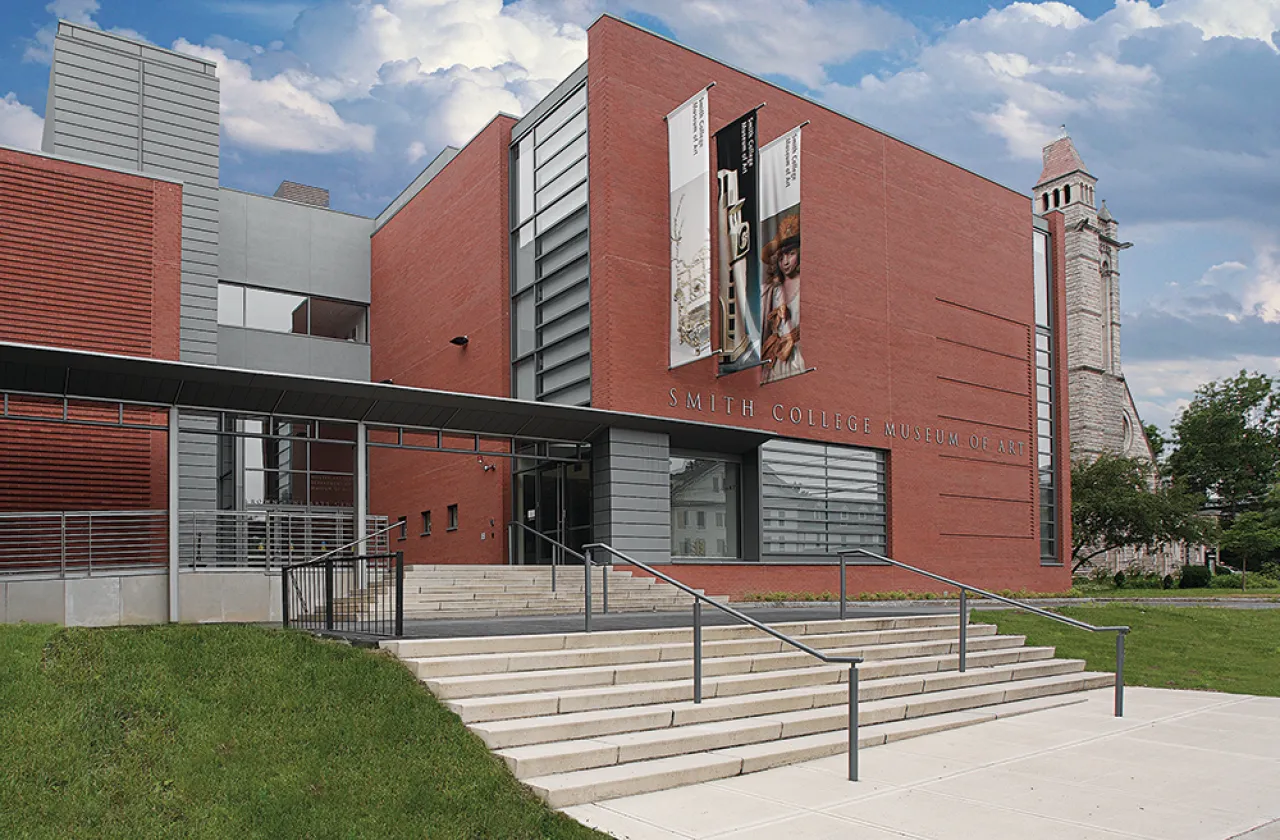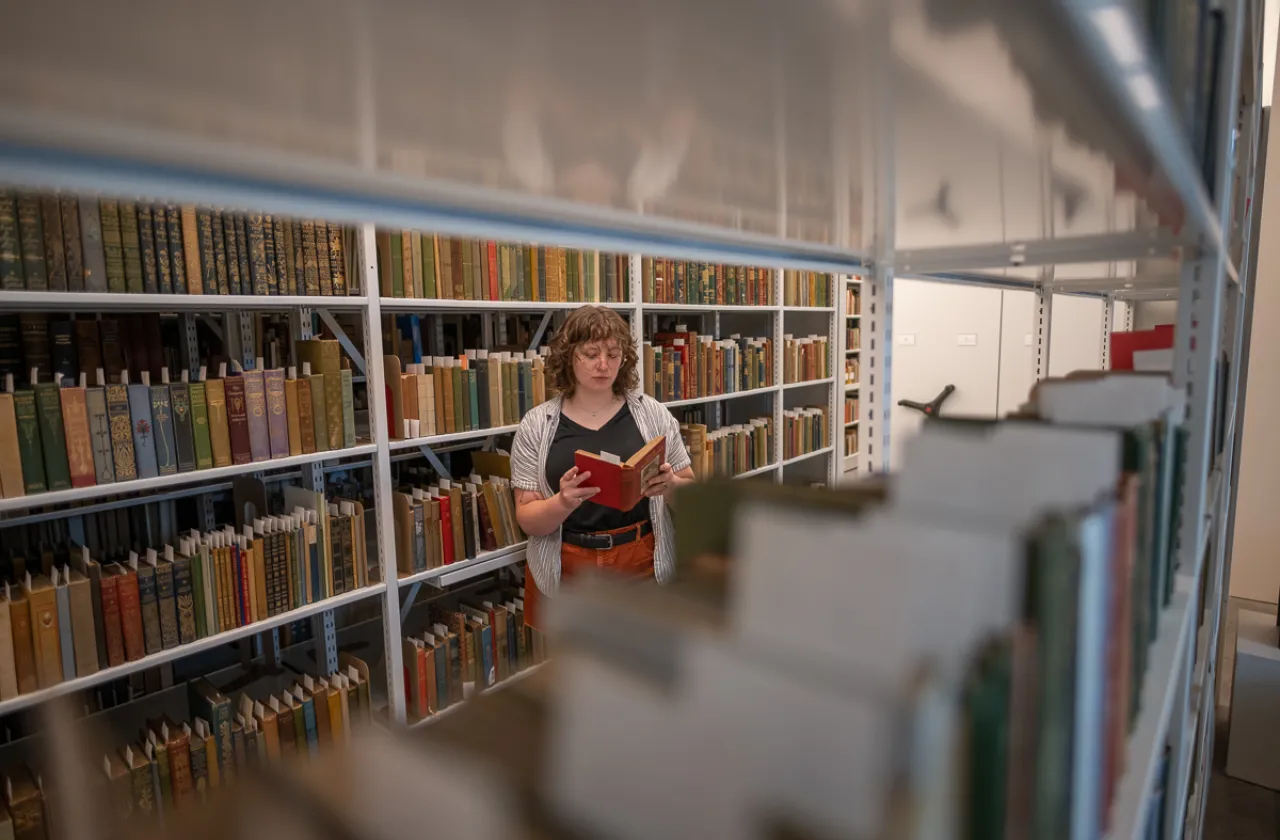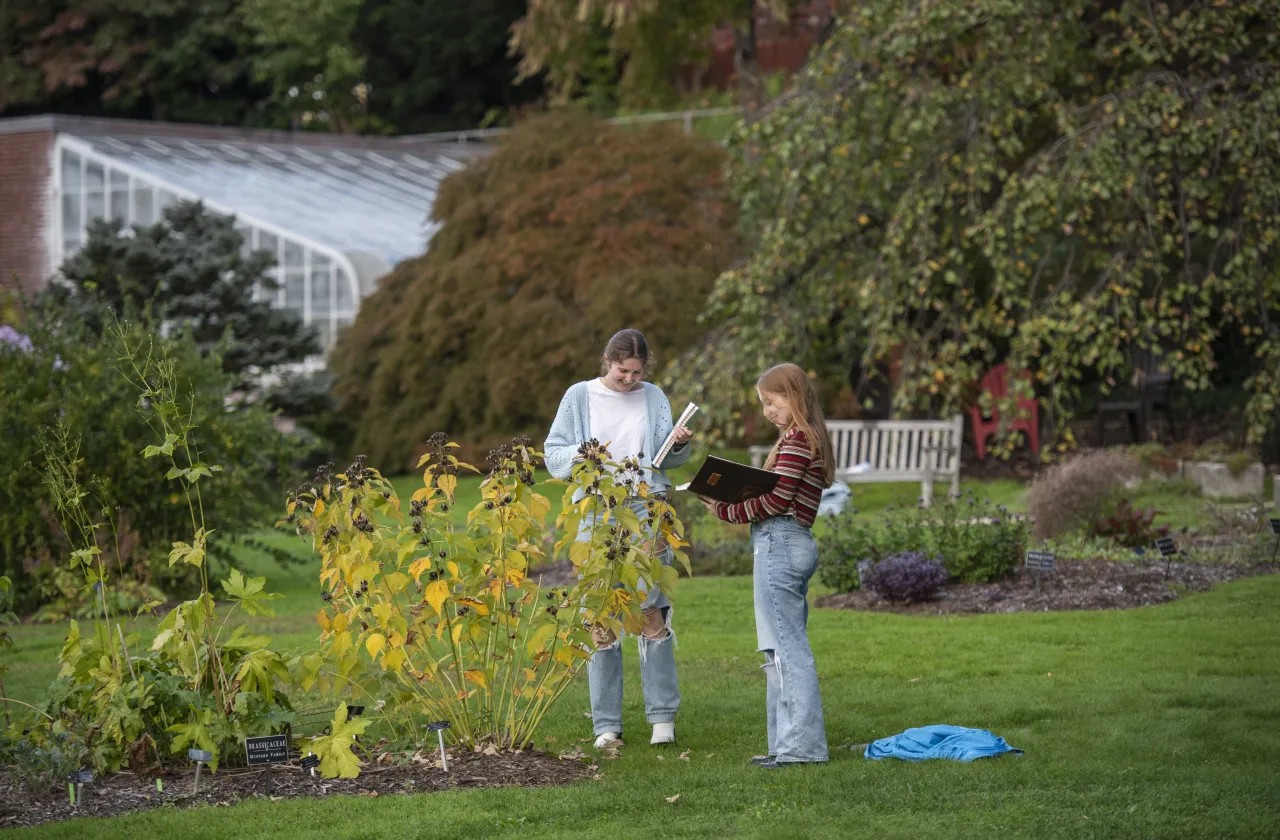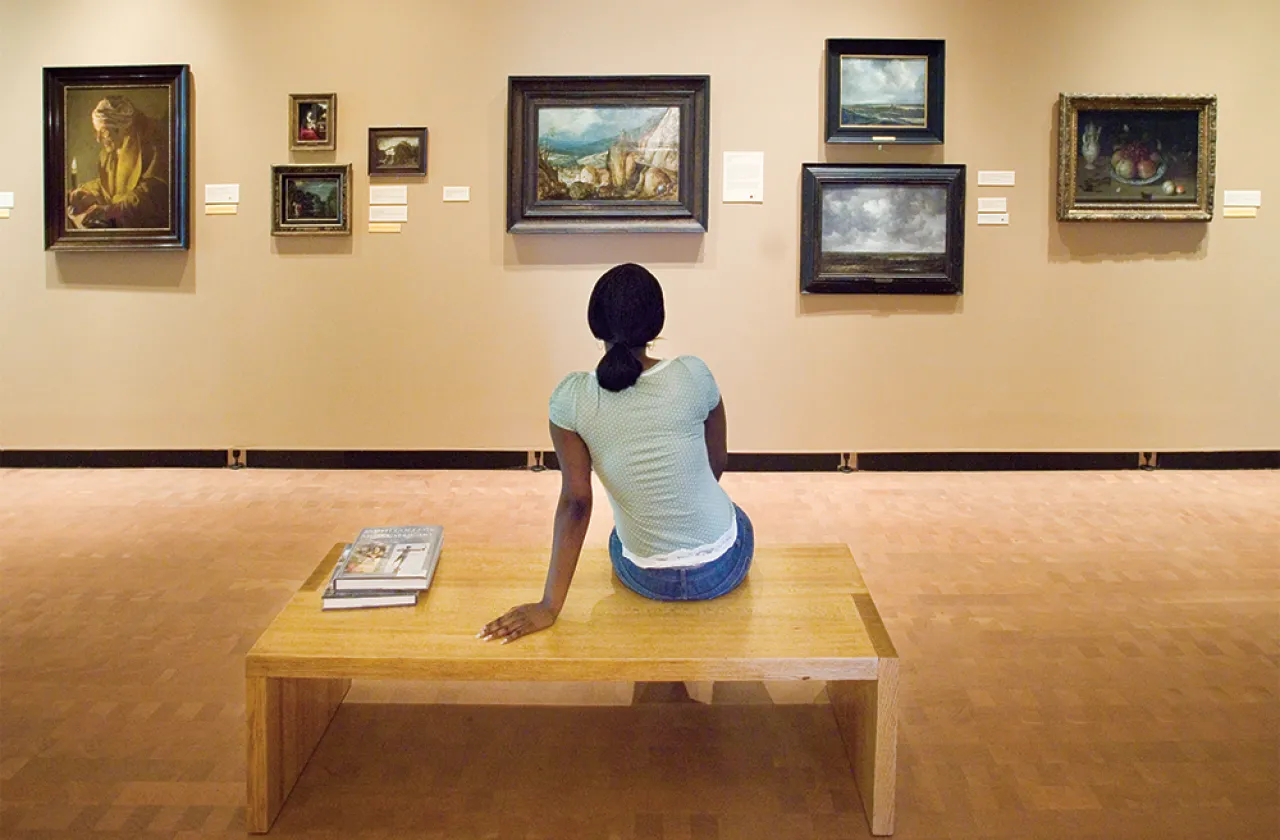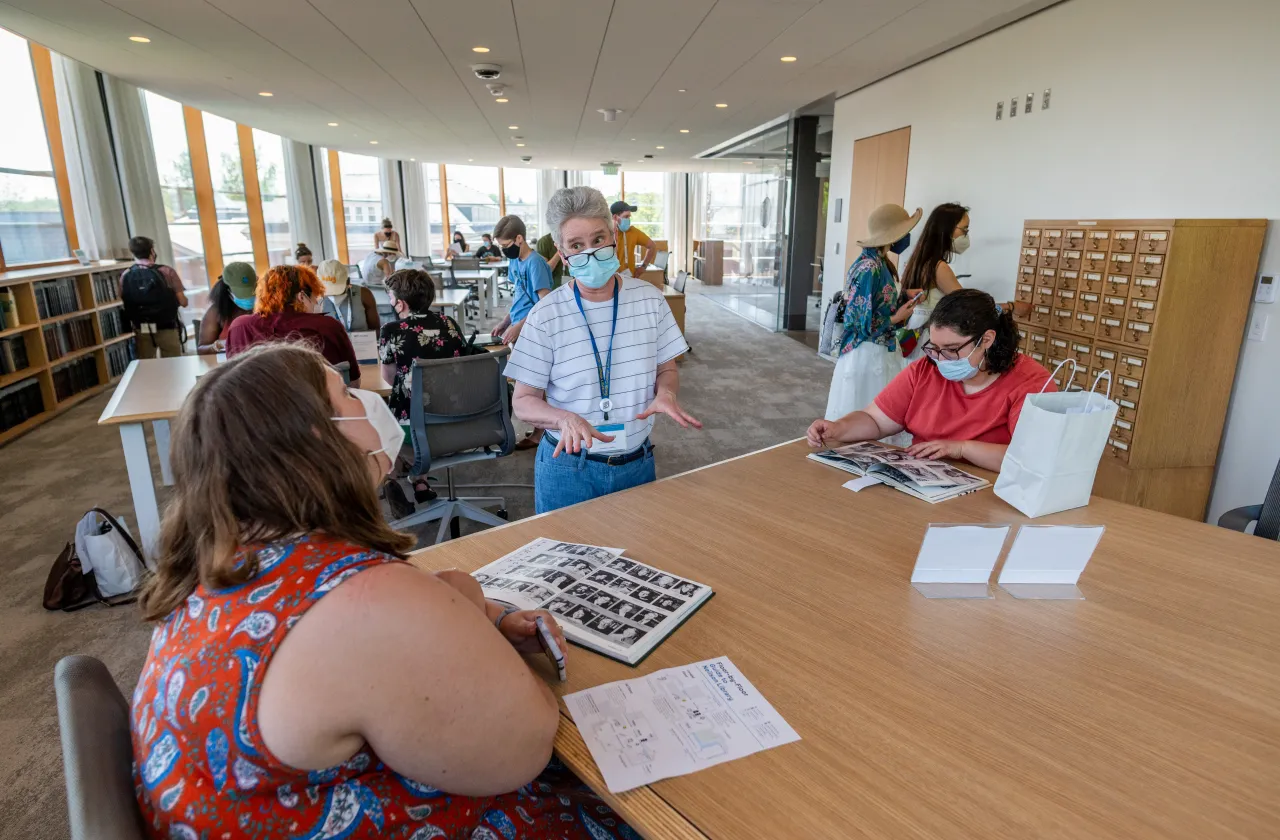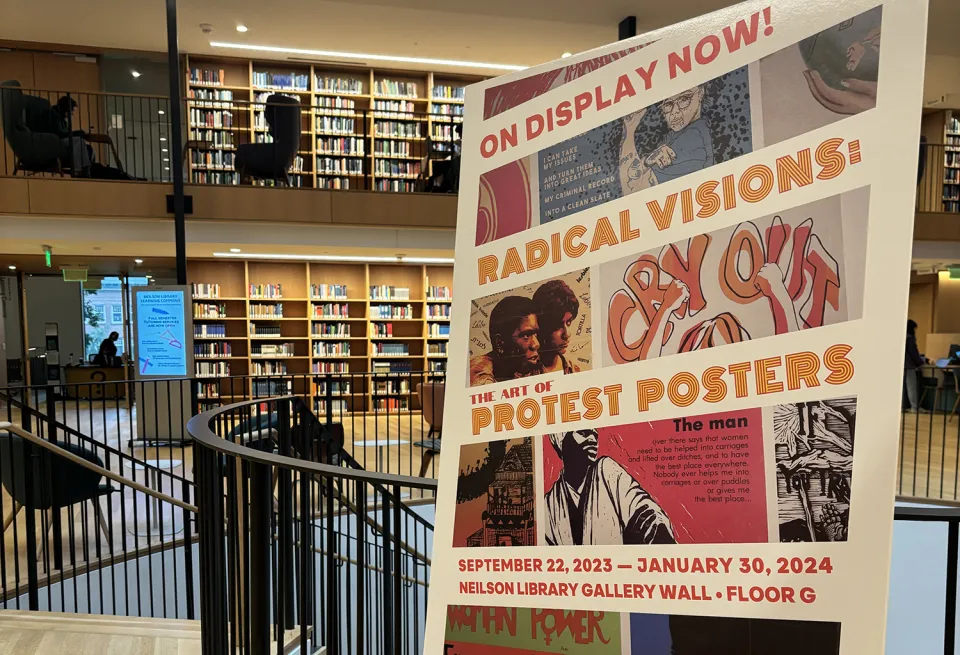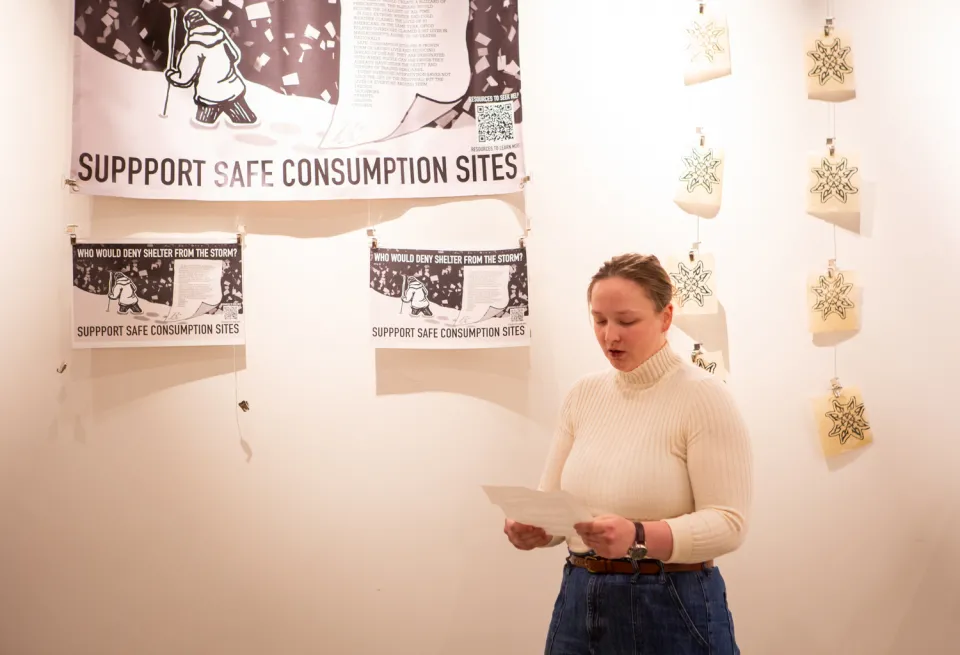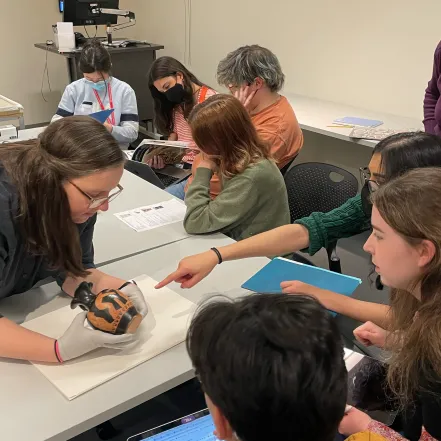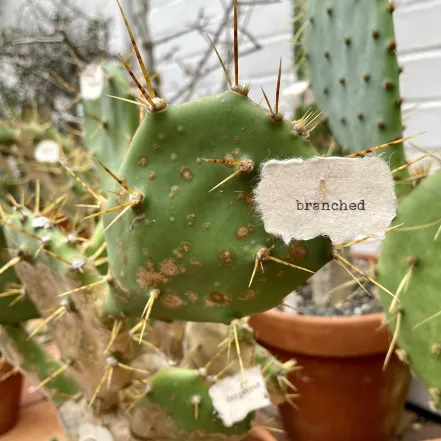Collections
Imagine a place where every form of human communication and storytelling exist; where world-renowned women’s history collections make visible the historically marginalized; where a world of living diversity surrounds you; where art spanning from ancient times to the present, ranging from Africa, the Americas, Asia, and Europe, cultivates inquiry and reflection; where your curiosity, discovery, and scholarship flourish. Welcome to Smith College Collections.
Beyond the Materials
When we talk about collections, we’re talking about not just the materials, we’re also referring to the spaces, events, and collaborations focused on them.
Collaborating Across Campus
In Practice
Special Collections
In response to the Radical Visions exhibition at Neilson Library in the fall of 2024, the public art element of the Amplify Competition was produced through a partnership between the Wurtele Center for Leadership, Special Collections, and the Smith Office for the Arts.
